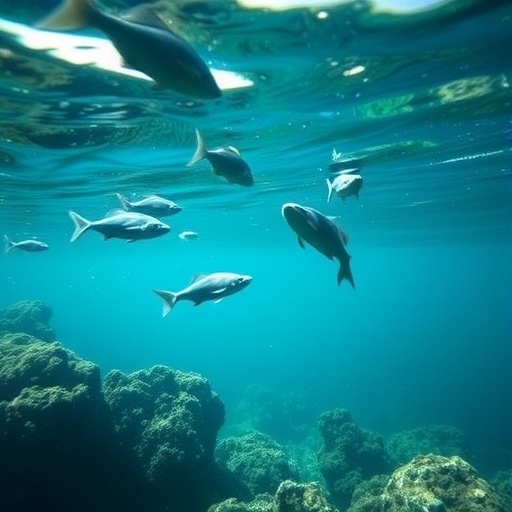The preservation of water quality in environmentally protected water bodies is an urgent concern as global water crises continue to escalate. The paper by de Alencar Cândido et al. (2025), titled “Analyzing water quality monitoring data of environmentally protected water bodies,” brings to light critical insights that may help mitigate potential hazards to aquatic ecosystems. This article provides a comprehensive exploration of the methodologies used in monitoring water quality and the implications of these findings on environmental policies.
Water bodies that are designated as environmentally protected play a pivotal role in supporting biodiversity and providing essential resources to local communities. The integrity of these ecosystems is often threatened by a variety of anthropogenic activities, leading to concerns over water pollution, habitat destruction, and resource depletion. The study emphasizes the urgent need for robust monitoring systems to track the changes in water quality over time, thereby ensuring that proactive measures can be implemented to maintain ecological balance.
The methodology outlined in the paper utilizes advanced statistical techniques to analyze historical data collected from various water bodies. By examining parameters such as pH, turbidity, dissolved oxygen, and nutrient levels, the researchers were able to identify trends indicative of pollution or other ecological shifts. Additionally, they employed machine learning algorithms to predict potential future scenarios regarding water quality, which is invaluable for resource management and policy formulation.
One of the key findings of the research highlights the correlation between land use practices in the surrounding areas and the quality of water in protected bodies. It was discovered that agricultural runoff poses a significant threat, introducing excess nutrients that lead to eutrophication—a process that severely disrupts aquatic life. This insight is particularly crucial for policymakers, as it underscores the need for better land-use regulations and integrated resource management strategies to mitigate these impacts.
Moreover, the data illustrates that urbanization significantly affects water quality, with increased impervious surfaces leading to higher levels of stormwater runoff. This runoff often carries pollutants from urban areas directly into nearby water bodies, exacerbating the degradation of ecosystems. The authors argue that understanding these relationships is vital for developing effective land-use policies that protect water quality, suggesting a more holistic approach that balances urban development with ecological preservation.
The study also emphasizes the importance of engaging local communities in water quality monitoring and management. Traditional top-down approaches often fail to incorporate valuable local knowledge and community observation. By involving local residents in monitoring activities, researchers can gather a wealth of qualitative data that complements quantitative analyses, leading to a more accurate and nuanced understanding of water quality issues.
In framing the analysis, the researchers also discuss the challenges faced by existing monitoring programs. Many of these programs lack the necessary funding, resources, and technical expertise to operate effectively. As a result, some protected water bodies remain chronically under-monitored and at risk of degradation. The paper calls for increased investment in monitoring infrastructure and outreach programs that can bolster the collections of water quality data and promote public awareness.
Critically, the study engages with the existing literature on environmental monitoring, synthesizing previous findings while highlighting gaps that remain in current knowledge. The authors argue that while great strides have been made in water quality assessment, more research is needed to explore the long-term implications of variable water quality on both aquatic life and human health. They propose interdisciplinary studies that incorporate hydrology, ecology, and public health to better understand these complex interactions.
As climate change continues to reshape ecosystems worldwide, adapting monitoring strategies to capture shifting patterns in water quality is paramount. The researchers note the potential for implementing adaptive management strategies guided by real-time data, which could vastly improve response times to emerging threats. This dynamic approach would require not only technological advancements but also a cultural shift in how institutions perceive and adapt to environmental challenges.
The paper concludes with a call to action for enhancing collaborative efforts among scientists, policymakers, and local communities in the fight to maintain the integrity of protected water bodies. By synthesizing their findings and urging stronger partnerships, the authors advocate for a comprehensive strategy that acknowledges the interconnected nature of water systems and the vital role of stakeholder engagement.
Through rigorous analysis and compelling data visualization, de Alencar Cândido et al. provide a vital resource for understanding the complexities surrounding water quality assessments. Their work serves as a clarion call for increased environmental stewardship and highlights the importance of interdisciplinary approaches in tackling pressing ecological issues. This research not only contributes to academic discourse but carries significant implications for future water policy in an age characterized by unprecedented environmental challenges.
The urgency of addressing water quality issues in protected areas cannot be overstated. As the study indicates, the health of our water bodies is inextricably linked to human activity and environmental governance. Continuous monitoring and proactive management practices supported by solid data are essential for safeguarding these critical ecosystems from both current threats and those anticipated in a changing climate.
In summary, this significant research underscores the interdependence between human agriculture, urban planning, and the ecological health of water bodies. By fostering a collaborative approach to water quality monitoring that integrates technological innovations, community knowledge, and robust policy frameworks, the global community can work towards a sustainable future where both human and ecological needs are met harmoniously.
Subject of Research: Water quality monitoring of environmentally protected water bodies
Article Title: Analyzing water quality monitoring data of environmentally protected water bodies
Article References:
de Alencar Cândido, T., Porfirio, S.S., de Lima Silva, K.S.B. et al. Analyzing water quality monitoring data of environmentally protected water bodies.
Environ Monit Assess 197, 1187 (2025). https://doi.org/10.1007/s10661-025-14605-2
Image Credits: AI Generated
DOI: 10.1007/s10661-025-14605-2
Keywords: Water quality, environmental protection, monitoring systems, pollution, biodiversity, land use, sustainable management.




